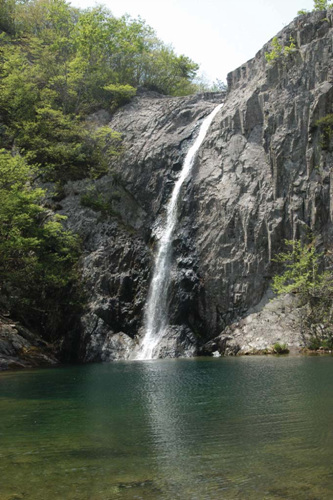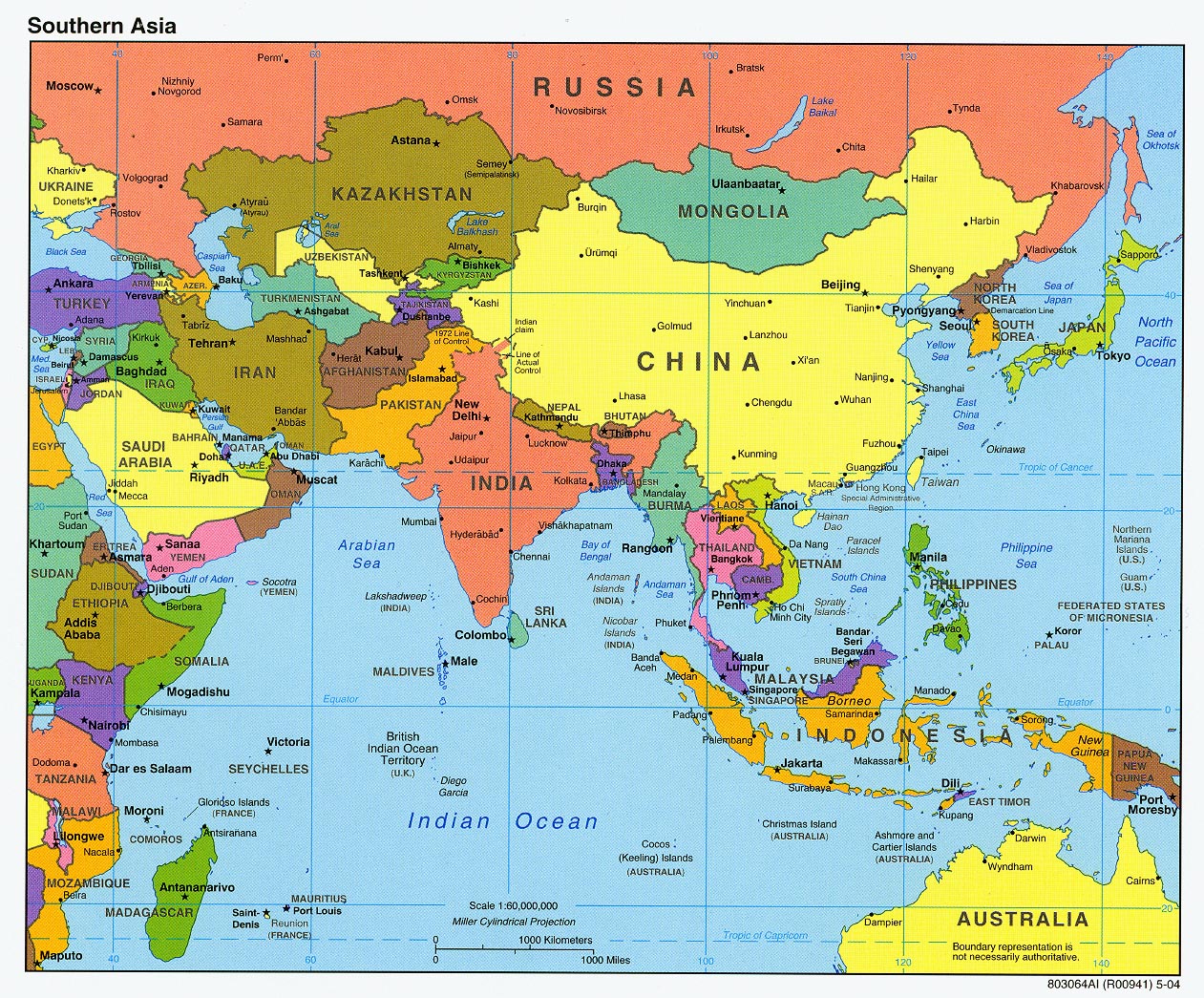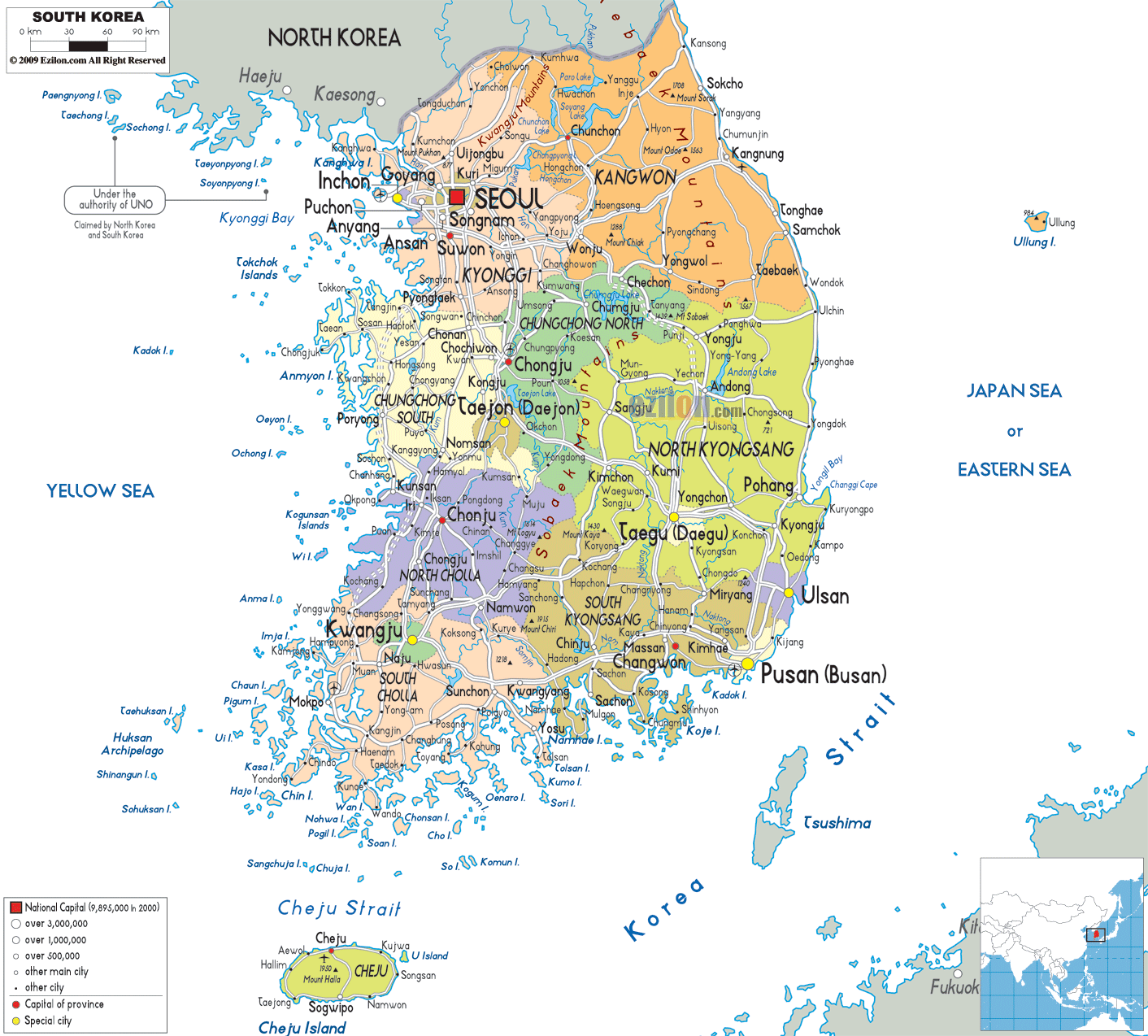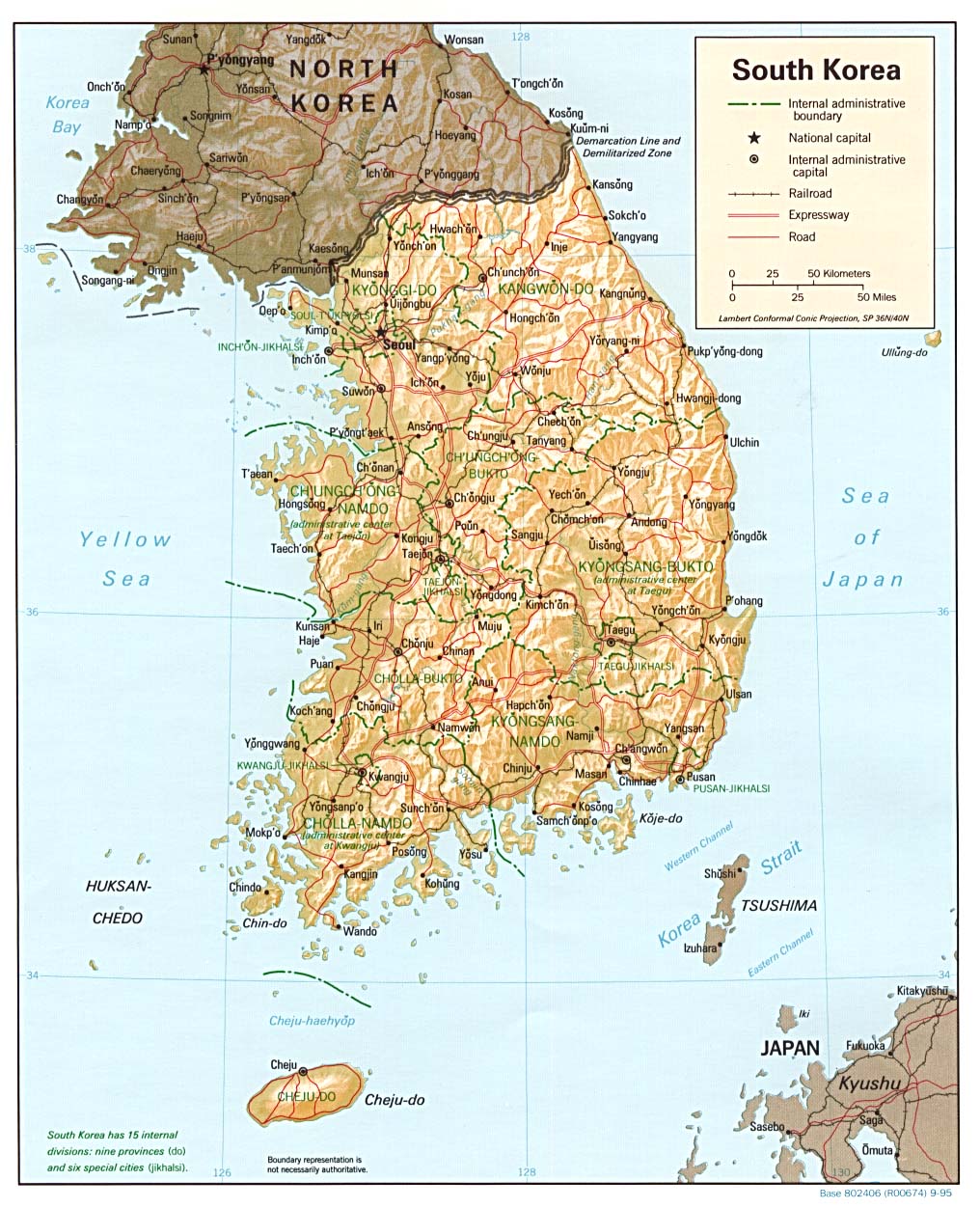Top Ten Tourist Destinations
1. Gyeongbokgung Palace
![]() Built in 1394 under orders of King Taejo. The Gyeongbokgung Palace houses
the National Folk Museum and the National Palace Museum of Korea. The palace is
composed of several buildings including the Gangnyeongjeon (Gangnyeongjeon
Hall), which was used as the king's main sleeping and living quarters. It is
arguably the most beautiful of its four sister palaces, which are all in Seoul.
The Gyeongbokgung Palace was originally a massive complex of 330 buildings with
5,792 rooms, but many of the buildings were destroyed during the Japanese occupation
of Korea (1910-1945). Since 1989, the Korean government is in the process of
rebuilding the structures that were destroyed.
Built in 1394 under orders of King Taejo. The Gyeongbokgung Palace houses
the National Folk Museum and the National Palace Museum of Korea. The palace is
composed of several buildings including the Gangnyeongjeon (Gangnyeongjeon
Hall), which was used as the king's main sleeping and living quarters. It is
arguably the most beautiful of its four sister palaces, which are all in Seoul.
The Gyeongbokgung Palace was originally a massive complex of 330 buildings with
5,792 rooms, but many of the buildings were destroyed during the Japanese occupation
of Korea (1910-1945). Since 1989, the Korean government is in the process of
rebuilding the structures that were destroyed.
2. Korean Folk Village
The Korean Folk Village is like a living museum. It occupies an area up to 243
acres in a natural environment located at Yongin-si, Gyeonggi Province. At the Folk Village, traditional dress, buildings, and folk traditions are recreated, making it a pleasant day trip a short 30 minute drive from Seoul.
3. Gyeongju Bulguksa Temple
 The Bulguksa Temple is located on Mt.
Tohamsan in Gyeongju National Park. During the reign of King
Gyeongdeok of Silla, Kim Daeseong, the premier of the time, started
constructing the temple. It was finally finished during the reign of King Hyegong.
However, most of the buildings were burnt down when Japan made an aggression
against Korea in 1593. Only some buildings including
Geungnakjeon Hall, Jahamun Gate, and Beomyeongru Pavilion survived from the
invasion.
4. Demilitarized Zone DMZ
The Bulguksa Temple is located on Mt.
Tohamsan in Gyeongju National Park. During the reign of King
Gyeongdeok of Silla, Kim Daeseong, the premier of the time, started
constructing the temple. It was finally finished during the reign of King Hyegong.
However, most of the buildings were burnt down when Japan made an aggression
against Korea in 1593. Only some buildings including
Geungnakjeon Hall, Jahamun Gate, and Beomyeongru Pavilion survived from the
invasion.
4. Demilitarized Zone DMZ

There’s no doubt that the DMZ is one of the key
experiences of any visit to Korea. and a great insight into the ethos and
emotion that plays a key role in a culture that many regard as divided in half
spiritually as well as politically. It’s also the closest you’re likely to get
to North Korea to. The DMZ is actually a
buffer zone between the two countries, and most tours involve staring across no
mans land towards the heavily guarded North Korean border. The land in
between is actually about as heavily militarized as any area of land in the
world.
5. Haeinsa Temple
The Temple of Haeinsa, on Mount Kaya, is home to the Tripitaka Koreana
, the most largest complete collection of Buddhist texts, engraved on 80,000 woodblocks. The buildings of Janggyeong Pangeon, which date from the
15th century were constructed to house the woodblocks, which are also revered
as exceptional works of art. As the oldest depository of the Tripitaka
, they reveal an astonishing mastery of the invention and implementation of the
conservation techniques used to preserve these woodblocks.
6. Jejudo
 Jejudo or Jeju Island, also known as the “Island of the Gods,” is a popular
vacation spot for Koreans and many international visitors. It remains one of the
top honeymoon destinations for Korean newlyweds. The island has mixture of
volcanic rock, frequent rains, and temperate climate, make it very similar to
the Hawaiian Islands in the U.S. The island offers visitors a wide range of
activities: hiking on Halla-san (South Korea’s highest peak), catching sunrises
and sunsets over the ocean, viewing majestic waterfalls and lava tubes, Jeju
Loveland, riding horses, or just lying around on the sandy beaches.
Jejudo or Jeju Island, also known as the “Island of the Gods,” is a popular
vacation spot for Koreans and many international visitors. It remains one of the
top honeymoon destinations for Korean newlyweds. The island has mixture of
volcanic rock, frequent rains, and temperate climate, make it very similar to
the Hawaiian Islands in the U.S. The island offers visitors a wide range of
activities: hiking on Halla-san (South Korea’s highest peak), catching sunrises
and sunsets over the ocean, viewing majestic waterfalls and lava tubes, Jeju
Loveland, riding horses, or just lying around on the sandy beaches.
7. Seoraksan National Park
One Korea's most popular national parks, Seorak-san gets a tremendous number of visitors to see the
leaves change color every autumn. The park is also heavily visited throughout the rest
of the year as well. Seorak-san's craggy peaks are often shrouded in mist, creating a
"sea of clouds" effect seen in many pictures of the area. The park contains
several famous temples, including Baekdam-sa.
The inner part of the Taebaek Mountain Range is named Inner Seorak. The other
major areas are Outer Seorak and South Seorak. All three areas are divided by
Daecheong-bong, the main peak of Seorak-san.
8. Namdaemun Market
 Named for its nearby namesake of
Namdaemun (Great South Gate) and located near the downtown area, is one of Korea's
largest wholesale markets that cover over 10 acres. It is filled with over 1,000
shops, stalls, retailers, street vendors, and has several department stores
nearby. Here you can find clothes, shoes, fabrics, tableware, flowers,
vegetables, ginseng products, toys, and watches. Under Namdaemun-no (the main
street to the north of the market) is an extensive underground
arcade.
Named for its nearby namesake of
Namdaemun (Great South Gate) and located near the downtown area, is one of Korea's
largest wholesale markets that cover over 10 acres. It is filled with over 1,000
shops, stalls, retailers, street vendors, and has several department stores
nearby. Here you can find clothes, shoes, fabrics, tableware, flowers,
vegetables, ginseng products, toys, and watches. Under Namdaemun-no (the main
street to the north of the market) is an extensive underground
arcade.
9. Busan Haeundae Beach

Busan is a seaport surrounded by several beaches. The most beautiful of them is
the Haeundae-beach. At about 1.5 kilometers in length it is well worth visiting
in the summer as well as the winter. In the summer, the beach is
hardly detectable due to all the people. You can rent boats there and all
possible kinds of water sports are catered for in beach proximity. The Busan
Aquarium is directly on the beach, and the Yachting Center is close
by. In addition, there are many modern hotels bordering the beach, as well as
clubs, bars and so on.
10. Yongpyong Ski Resort

The Yongpyong Ski Resort is located at a very inhabitable range of 700 meters
above sea level. It is found at the eastern edge of Asia, about 200km from
Seoul. With an annual snowfall average of
250cm, the surrounding area possesses a beautiful environment, which allows for
the enjoyment of a wide array of winter sports including skiing from
mid-November to early April. On its 4,300 acres, you will find a 45-hole golf
course, 31 ski slopes, premium hotels, European-style condominiums and many
other leisure facilities that can be enjoyed by the whole family.
















 12:25am 5:55pm 16:30hrs $970.0 movie + meal
12:25am 5:55pm 16:30hrs $970.0 movie + meal 1:10am 3:35pm 13:25hrs $2792 movie + meal
1:10am 3:35pm 13:25hrs $2792 movie + meal 9:15am 4:15am 30:00hrs $2139 movie + meal
9:15am 4:15am 30:00hrs $2139 movie + meal


.JPG/640px-Dogo_Hot_Spring2(Matsuyama_City).JPG)





